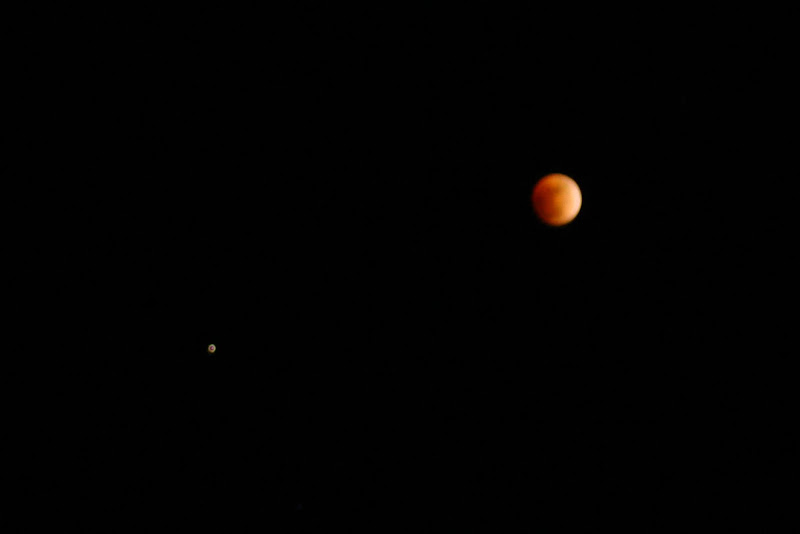R
rocketman
Guest
Voni, you have the patience of a saint... I tried that with my telescope, but gave up after a few failed attempts.
Maybe it was the cold (15 degrees), or the darkenss, or the high magnification on my telescope, but I couldn't get the lens properly aligned with the eyepiece long enough to get an autofocus...
Here's my best (cropped):

I like the way Jupiter can be clearly seen as a planet rather than just a dot of light, very nice. Even has a bit of color showing.
FYI if you spend enough time star gazing you will start to notice the different colors of them, it takes practice and patience but once you become aware of it, I've found it adds to the experience. The colors relate to the stars temperatures and indirectly to size and age.
RM
(junior astronomer)










